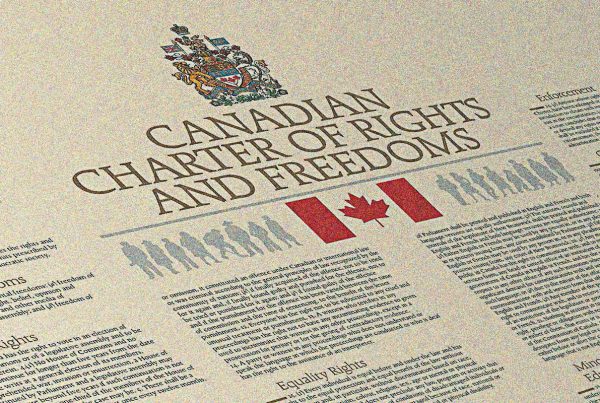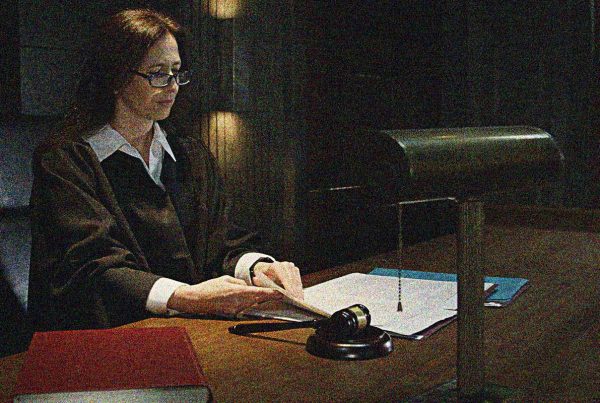La Charte canadienne des droits et libertés protège les droits et libertés clés de tout le monde au Canada. Ces droits sont essentiels pour préserver le statut du Canada en tant que société démocratique où nous pouvons vivre nos vies librement.
Pourtant, si certains des droits les plus importants prévus à la Charte étaient des cartes à jouer, la clause dérogatoire serait le Joker qui les surpasserait tous.
L'article 33 de la Charte, communément appelé « clause dérogatoire », donne au législateur la possibilité d'ignorer d'importants droits et libertés fondamentaux protégés par la Charte.
Lorsqu'elle est invoquée, cette clause empêche les tribunaux d'annuler des lois violant certains droits garantis à la Charte.
Les droits soumis à la clause dérogatoire sont loin d'être insignifiants. Les articles 2 et 7 à 15 de la Charte comprennent certains des principes les plus fondamentaux et les plus essentiels à une société libre et démocratique.
Certains de ces droits sont omniprésents dans la vie quotidienne. Ils permettent à tout le monde :
- de s'exprimer librement sur des sujets qui leur tiennent à cœur, quelles que soient leurs opinions, aspirations et convictions politiques;
- de manifester pacifiquement pour défendre leur vision d'un monde meilleur;
- d’exercer librement leur religion; et
- de négocier collectivement pour obtenir de meilleures conditions de travail.
D'autres droits couverts par la Charte ont pour but de protéger les individus lorsqu’ils sont à leur plus vulnérable :
- Ces droits garantissent que chacun est traité de manière égale par la loi.
- Ils protègent la vie, la liberté et la sécurité de tous, quels que soient leurs antécédents ou leur situation personnelle.
- Ils garantissent que les personnes ne sont pas détenues arbitrairement et qu'elles sont présumées innocentes jusqu'à ce que leur culpabilité soit prouvée.
Puisque ces droits et libertés sont si fondamentaux pour chacun d'entre nous, certains pourraient se demander pourquoi la clause dérogatoire existe. La réponse à cette question est qu’elle résulte d'un compromis politique.
En 1981, lors de l’élaboration de notre Charte, le gouvernement fédéral, l'Ontario et le Nouveau-Brunswick étaient favorables à l'établissement d'une charte nationale des droits, tandis que les autres provinces s'y opposaient, préférant laisser le dernier mot au législateur. L'article 33 fut considéré comme un moyen de sortir de cette impasse.
Plusieurs élus directement impliqués dans les négociations en 1981 ont depuis confirmé que la clause dérogatoire n'a jamais eu pour but de contourner le processus judiciaire habituel, ni d'être utilisée régulièrement par un gouvernement pour passer outre à la règle de droit :
« La clause dérogatoire n’avait pour seul but que de servir dans les cas exceptionnellement rares où une province voulait mettre en place une prestation ou un programme particulier pour une partie de sa population — les personnes d’un certain âge, par exemple — qui aurait pu sembler discriminatoire en vertu de la Charte. »
– Ancien premier ministre de l’Ontario, 1971-1985
« Cette clause a été conçue pour être invoquée par les législatures dans des situations exceptionnelles, et seulement en dernier recours après mûre réflexion. Elle n’a pas été conçue pour être utilisée par les gouvernements comme une commodité ou comme un moyen de contourner la procédure appropriée. »
– Anciens procureurs généraux du Canada, de la Saskatchewan et de l'Ontario, 1981
La clause dérogatoire était censée être un dernier recours, et non un moyen pour les gouvernements de se défiler à l’avance de la protection des droits garantis par la Charte. Il est alarmant de constater de l'histoire récente que certains gouvernements provinciaux n’hésitent plus à s'écarter de cet objectif initial. Nous devrions tous nous méfier de la normalisation de l'utilisation de cette clause dangereuse pour déroger à des droits et libertés importants.













